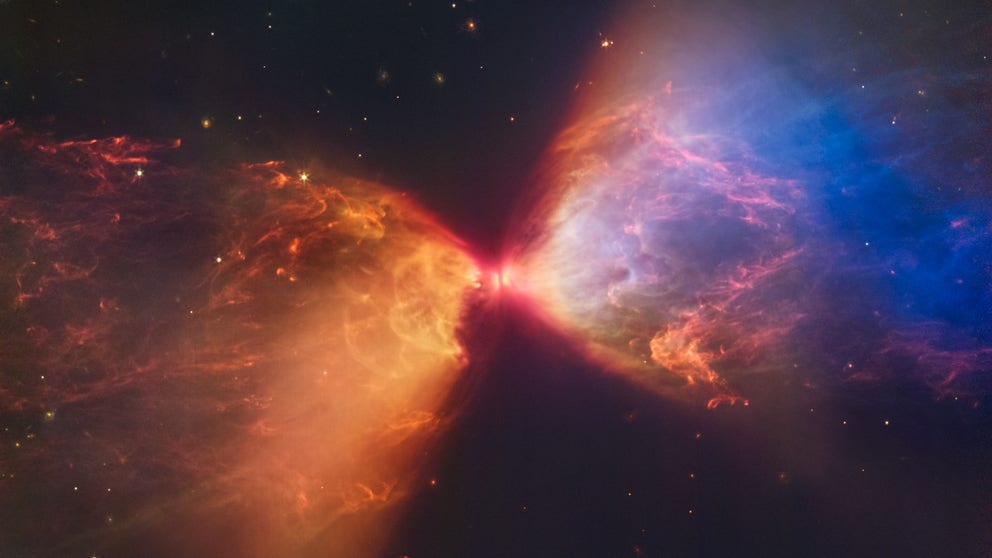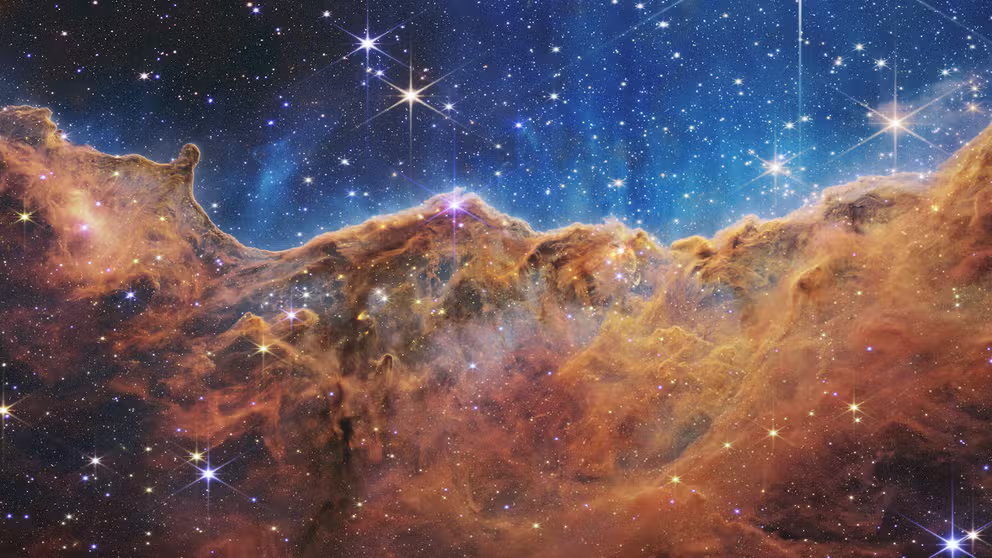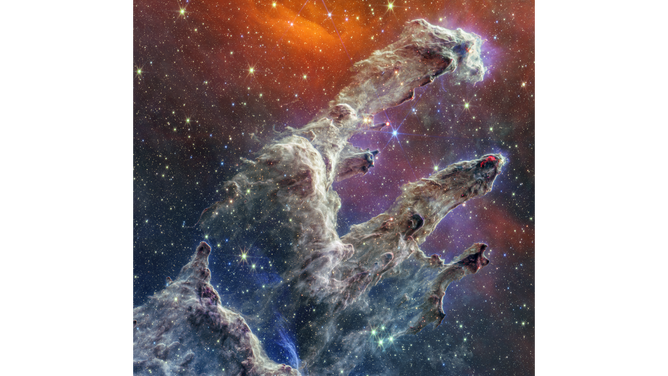See the ‘whirlwind’ of images taken during James Webb Space Telescope's first year
Scientists are only really just beginning to understand how best to use the James Webb Space Telescope. NIRCam scientist Kevin Hainline, with University of Arizona, describes some of the highlights from JWST's first year operating in space.
See stunning images taken by the James Webb Space Telescope
The James Webb Space Telescope has released mesmerizing images of the deepest corners of our universe.
After an astounding first year of science, the James Webb Space Telescope is just getting started as scientists are fully beginning to grasp how they can utilize the most powerful space telescope ever built.
It's now been one year since JWST became fully operational in July 2022. NASA, the European Space Agency and Canadian Space Agency marked the milestone by releasing some of the first images taken by the golden telescope, which wowed the public and science community alike.
Webb has exceeded expectations and the telescope team believes it will be operating for possibly 20 or 30 years.
Incredible images from James Webb show the universe like never before
As the world's premier space science observatory, the James Webb Space Telescope is giving us glimpses into distant worlds like never before.
"The first year of JWST has been a whirlwind," said JWST scientist Kevin Hainline.
The global science community waited decades for the James Webb Space Telescope to usher in a new era of discovery.
WEBB REVEALS GALAXIES IN EXQUISITE DETAIL
"It was pretty crazy, doing shifts and watching as individual segments are going on and thinking, 'Man, one day this thing will be in space. And now it is. And it's the same mirrors … capturing light from the dawn of time. It's marvelous." said Hainline.
Hainline, an assistant research professor at the University of Arizona, is a member of the science team for the primary camera on JWST, the near-infrared imager or NIRCam. Hainline describes NIRCam as the "workhorse" camera of the telescope, seeing at wavelengths the human eye can't and delivering high-resolution images like the one below.
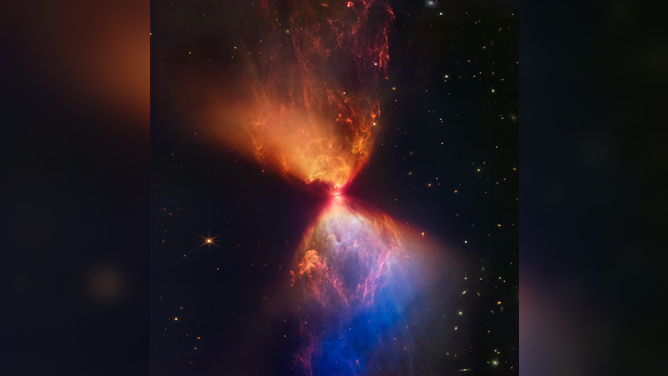
The protostar within the dark cloud L1527, shown in this image from NASA’s James Webb Space Telescope Near-Infrared Camera (NIRCam), is embedded within a cloud of material feeding its growth. Ejections from the star have cleared out cavities above and below it, whose boundaries glow orange and blue in this infrared view. The upper central region displays bubble-like shapes due to stellar "burps," or sporadic ejections. (Image credits: NASA, ESA, CSA, and STScI. Image processing: J. DePasquale, A. Pagan, and A. Koekemoer (STScI))
(NASA)
JWST has been able to follow up on images from the Hubble Space Telescope showing new details and returning images covered in as many galaxies as freckles.
Hubble was limited by its wavelength range and couldn't see through the dust like Webb. Already the telescope has discovered the farthest confirmed galaxy from about 350 million years after the big bang.
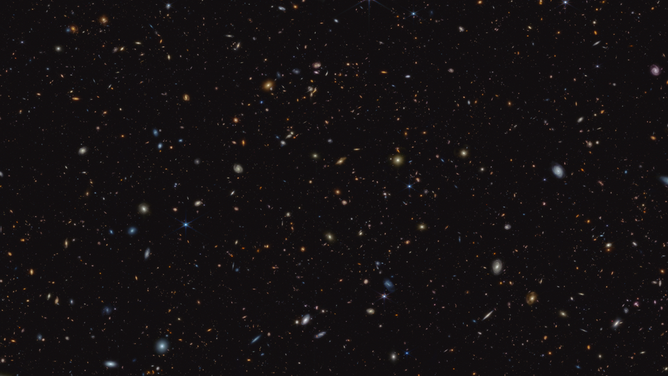
This infrared image from NASA’s James Webb Space Telescope (JWST) was taken for the JWST Advanced Deep Extragalactic Survey, or JADES, program. It shows a portion of an area of the sky known as GOODS-South, which has been well studied by the Hubble Space Telescope and other observatories. More than 45,000 galaxies are visible here. (Image credits: NASA, ESA, CSA, Brant Robertson (UC Santa Cruz), Ben Johnson (CfA), Sandro Tacchella (Cambridge), Marcia Rieke (University of Arizona), Daniel Eisenstein (CfA). Image processing: Alyssa Pagan (STScI)
(NASA)
"It's really beautiful to look at some of the Hubble images versus the (JWST) NIRCam images to just see what works, what we were missing in the early images," Hainline said.
When JWST observed the famous Eagle Nebula known as the "Pillars of Creation," the difference between Hubble's 1995 observation and Webb's was like black and white.
The next call for proposals to use the James Webb Space Telescope observation time opens this fall.
The first year is kind of like 'Wow, what can we do with this telescope? That's amazing.'" Hainline said. "Then the second year is like, 'What can we really do with this telescope?"
Now that scientists have warmed up to JWST, Hainline said the discoveries are just beginning. The first year of data alone will inspire more papers and lead to more discoveries.
"There's just tons and tons of objects that we want to go back and be like, 'What's going on with that one? Let me study that one in more detail,'" Hainline said.
‘The world’s telescope'
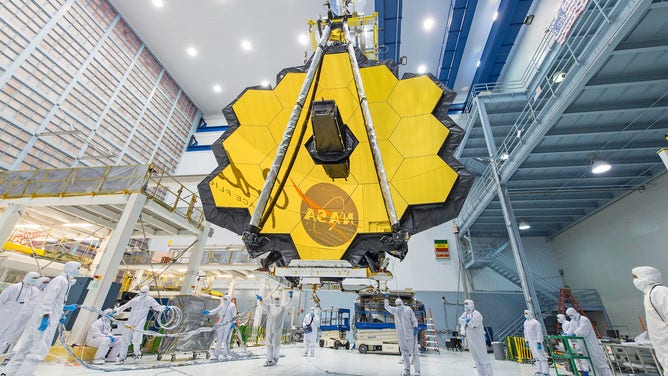
James Webb Space Telescope's primary mirror at NASA Goddard. Webb's mirrors are covered in a microscopically thin layer of gold, which optimizes them for reflecting infrared light.
(NASA)
The next generation of astronomers and space explorers will benefit from JWST. Discoveries with Webb will continue for generations.
"Someone right now who's in high school will get their Ph.D. on the data set I'm working on now," Hainline said. "We are not data-limited, we are people limited. There are not enough people working on the amount of data with that database to come down with."
While the budget for James Webb Space Telescope swelled to more than $10 billion, there was criticism with each launch or engineering delay for this government-funded telescope.
JAMES WEBB SPACE TELESCOPE LAUNCHES ON CHRISTMAS DAY BEGINNING 1 MILLION-MILE JOURNEY
Hainline said while the wait was painstaking, it was worth it to do it right because there isn't another James Webb Space Telescope waiting in a hangar somewhere.
"This is not my telescope. This is our telescope. This is the world's telescope," he said. "The images that you see … are yours to look at and explore."
